Our own backyard: Wish we were here
With international borders sealed shut, all hope of adventure lies within. Luckily, some of the planet’s most amazing places are in our own backyard. Here’s eight life-changing destinations to discover …

Lord Howe Island, NSW
It’s a relatively short flight from east coast ports to crescent-shaped Lord Howe Island, 700km northeast of Sydney, but there is time travel involved, too, back to a destination with the genuine charm and courtesy of much earlier eras.
Prepare to fly over Ball’s Pyramid, the world’s highest sea stack, and be greeted by an arrival committee of cows, mooching beyond a mesh fence, as the Qantaslink turboprop plane taxis to a standstill at the tiniest of airports.
This serene UNESCO-treasured isle has more bustling wood hens than permanent residents. Daily tourist numbers are capped at 400, which more or less doubles the population. It’s delightfully quiet, seemingly immutable and even a bit daggy, but in a good way. Towelling hats and thongs? Why not, I say. No one dresses to impress and everyone’s welcome at the Bowlo for fish and chips and a go on the green.
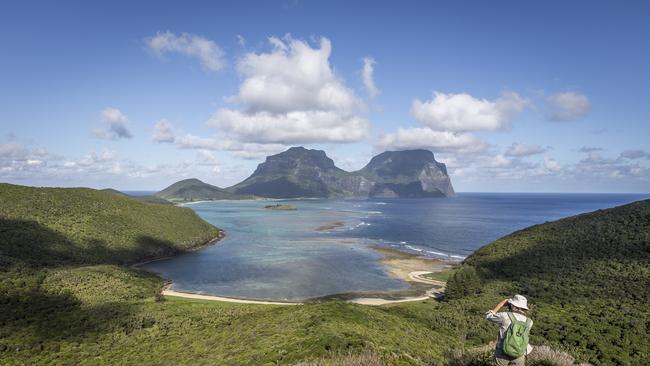
Best base camp? Low-rise, up-scale Capella Lodge enjoys a prime position amid frangipani and endemic kentia palms, overlooking the looming peaks of Lidgbird and Gower mountains. There are nine suites, named for topographical features, and the design template is all ceiling fans, pale beech timber and coastal colours, with the trademark stylish touches for which Australian operator Baillie Lodges is well known.
Cycling, walking and meandering are a few of the satisfyingly old-fashioned ways to explore. Safe bays and swimming spots abound and don’t miss Ned’s Beach in the northeast. Pop $1 in the honesty box for a handful of pellets and handfeed fish swarming in the shallows or grab a beach umbrella for $12 a day, lie back and make like it’s last century.
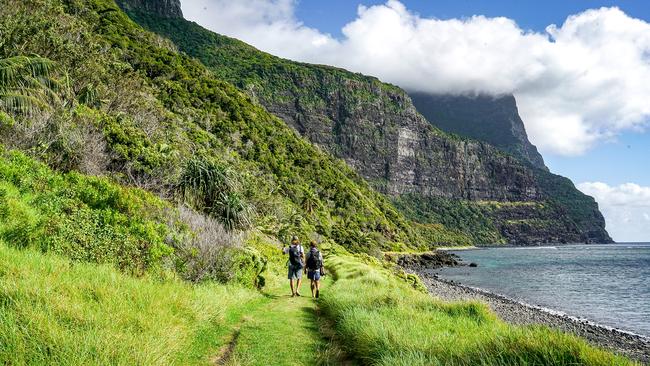
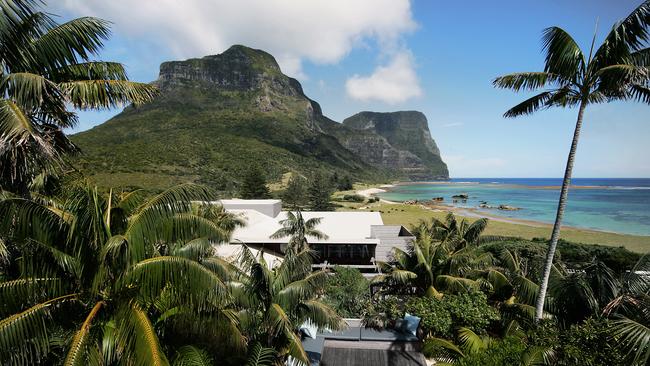
Chopped wood is provided at immaculately kept public barbecues if you want to pick up supplies in the little township for a meaty sizzle. Touring options include glass-bottom boat excursions to spot turtles, or snorkelling and diving the world’s most southerly coral reefs, protected with marine park status. Or hike along well-marked trails and clean your footwear at boot scrub stations to stop the spread of fungus and weeds. Two-thirds of the island is natural forest and there are 241 recorded species of indigenous plants, of which 47 per cent are found nowhere else. Bird-watchers, pack those binoculars.
Last visit, I grabbed a Capella Lodge hamper one afternoon and sat on a bench overlooking Lovers Bay. The silence was healing, almost surrealistic. When a small group of walkers appeared, it felt ridiculously intrusive. But they quickly passed and I was alone again, with no mobile reception or Wi-Fi access, just adrift in the healing colours of nature and the immutable splash of waves.
NEED TO KNOW
Qantaslink flies to Lord Howe Island from Sydney and Brisbane plus seasonal flights from Port Macquarie. Capella Lodge rates start at $850 a person a night (minimum two nights) twin-share and include breakfast, sunset drinks and canapes, dinner, open bar from 6pm daily, non-alcoholic beverages, selected in-suite minibar and island airport transfers. Children 10 years and over welcome.
■ lordhoweisland.info
■ capellalodge.com.au
■ qantas.com
Susan Kurosawa is Associate Editor (Travel) of The Australian
-
King Island, Tasmania
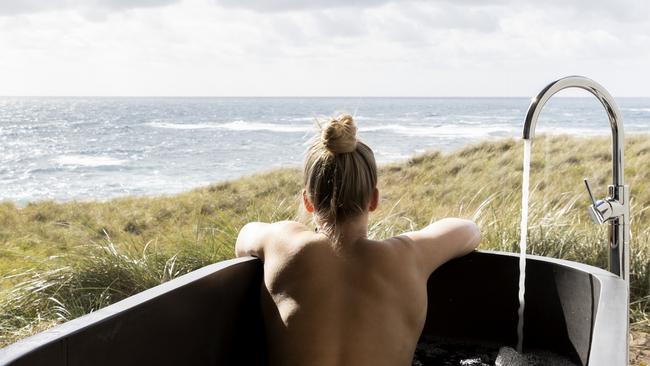
I didn’t know how much I needed King Island until my first trip here in February. I have happily made my way through many cheeses from King Island Dairy. I knew that the beef grown on its Roaring 40s-swept pastures is world-class, and that crayfish brought here from the waters of Bass Strait are prized. Yet somehow I had no concept of King Island as a place to visit.
The instant I arrived, I wanted nothing more than to linger longer on this island off an island. It’s a distilled dollop of Tasmania and yet very much its own domain.
When Aaron Suine and Nick Stead first visited King Island, they were living in Sydney’s Paddington – Suine is a lawyer and Stead an organisational psychologist. They wanted to raise their baby son Abraham in a small community and decided that King Island in Bass Strait, population circa 1600, was it.
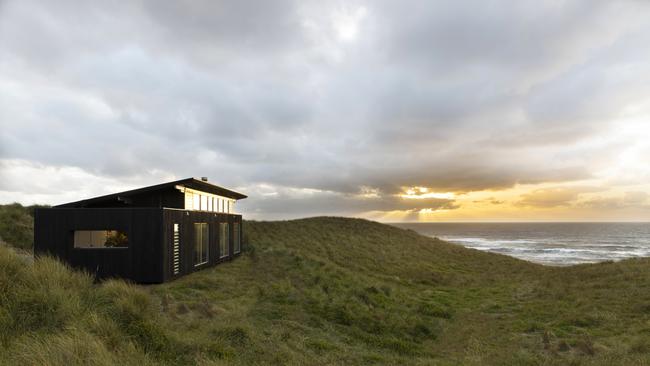
So almost five years ago, they bought 39ha of oceanfront land on the 1098 sq km island and set about building two luxury cabins and their own home. “We wanted to create a place where people can disconnect to reconnect, whether with themselves, each other or the environment – hopefully all three,” says Stead. Kittawa Lodge opened in late 2019, blending off-grid luxury and wild environment.
I gaze out from the voluminous bathtub as sunset gathers itself into a fiery oil painting, marvelling that the next landfall is Argentina. It’s the roiling view, the Bennett’s wallabies bouncing around the tussocks outside my cabin and me.
Everything has been painstakingly designed around comfort and care, from perfectly positioned lights to fine linens and an expensively kitted-out kitchen for cooks to make the most of the local produce. The cabin simultaneously cocoons me and makes me feel as if I’m at one with the glorious natural surroundings.
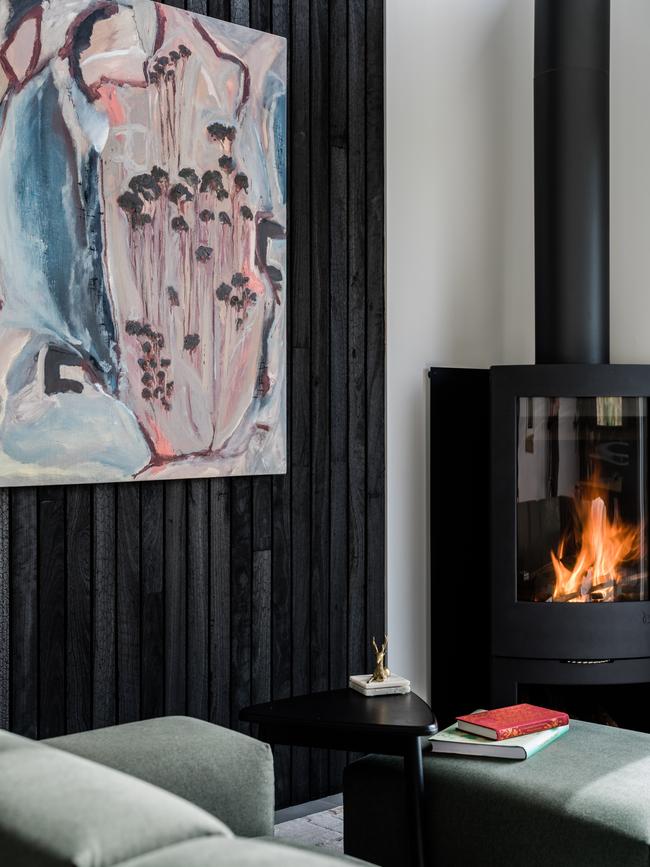

It’s a procession of pleasures, from Kittawa’s bespoke toiletries made with local botanicals to the armfuls of fresh natives Suine gathers to decorate the lodge and the just-right treats waiting with a note when I return home from exploring.
I drive around the island slowly to avoid the numerous wallabies, and with frequent stops to watch birds or soak in yet another rugged vista. In the tasting room at King Island Dairy, I learn that the labels I’ve mindlessly unwrapped for cheese boards take their names from their surroundings: Cape Wickham, Seal Bay, Phoques Cove, Lighthouse, Stormy.
Surfers, golfers, art lovers, fishers, divers, nature-lovers and history buffs will all find their own wonderlands on King Island, likely coming together at the convivial crossroads of the foodie trail.
My visit coincides with one from a delegation of ambassadors from the European Union, here to recommend that King Island develop an EU-like system of ‘geographical indicators’ to protect and promote its unique produce. Two Bond University academics released a case study in support of this in August.
King Island flavours will continue to dance on tastebuds around the world, but if you want to experience the briny perfection of a Sea Elephant oyster, you’ll have to get yourself here. None of these beauties are exported, but in season they can be had for a bargain price at King Island’s supermarkets. For these oysters and so much more, I need to urgently return for further research of my own.
NEED TO KNOW
Sharp Airlines has direct services to King Island from Melbourne (Essendon Airport), Launceston and Hobart (the last is a new service scheduled to run until the end of January). King Island Airlines flies daily between Moorabbin Airport and the island.
Kittawa Lodge rates commence at $880 per night for two, with a two-night stay minimum, including gourmet brekkie provisions, with packages available that include meals, massages and tours. Also, while it’s off-grid, there is fast, free Wi-Fi.
■ kittawalodge.com.au
■ sharpairlines.com.au
■ kingisland.org.au
Jane Nicholls
-
The Red Centre, Northern Territory
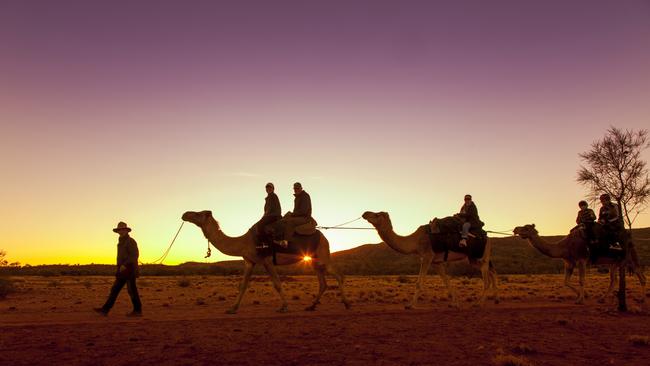
West of Alice Springs hides perhaps one of the best outback road trips in Australia. A week-long excursion around the looping Red Centre Way takes in plenty of magnificent desert scenery and iconic spots like Kings Canyon and Uluru-Kata Tjuta National Park. You need a 4WD to do it properly. Those are easy to hire in the dusty regional hub. Alice Springs is itself reachable by air from most coastal cities and surprisingly cosmopolitan nowadays, full of coffee-quaffing hipsters and their avocado toast.
The road heads west into the MacDonnell Ranges, which inspired much of Albert Namatjira’s work. Red Centre visitors often see only its postcard sites. Those are spectacular but offer a gated version of a landscape blessed by lack of constraint.
Families may enjoy a dip in Ellery Creek Big Hole or a stroll down Ormiston Gorge or Angkerle Atwatye (Standley Chasm). Don’t miss the detour to Palm Valley: Kalaranga lookout can be breathtaking at sunset, and Mpulungkinya walk is pleasant.
For the adventurous, the Aboriginal communities of Ikuntji and Papunya are accessible in a day but check before you go. The photographer Ken Duncan and a religious group are erecting a huge, illuminated cross above Ikuntji, believing it could bring back Christ. The Mereenie road takes you out past Tnorala (Gosse Bluff), a 142 million-year-old meteorite impact crater and Western Arrernte sacred site, and on to Kings Canyon, where there is a plush resort. Some travellers may prefer the hospitality of Kings Creek Station, a working cattle station that also happens to be the place where the former prime minister Tony Abbott famously got lost in the bush.
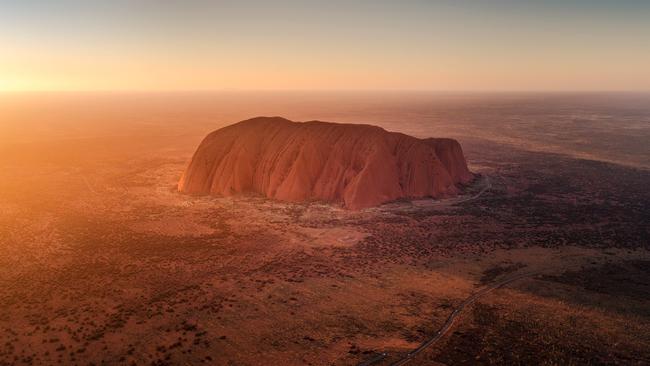
Uluru-Kata Tjuta National Park speaks for itself and may be less crowded now the ‘last climb’ rush is over. Many of the Park’s businesses are not owned or operated by local Anangu. It’s well worth patronising those that are and taking the time to meet people. The Lasseter and Stuart highways back to Alice Springs are the main tourist routes to and from the rock. Curtin Springs and Erldunda roadhouses have both done it tough during the pandemic and would likely appreciate a visit. If you still have time, stop at Rainbow Valley, which is picturesque in the afternoons and can be good for camping. The Red Centre Way is about 500km in total, depending on how many side trips you take. If you don’t mind paying to leave your vehicle in a different location, go slow and stop at Uluru — fly out from Yulara — or start there and reverse the route.
Take plenty of water and fuel, and never drive off tarmac when there has been or could be bad weather. The creeks in Central Australia are dry for most of the year but can flood in minutes after a storm. Some tracks become boggy and impassable when wet.
With trouble aside, enjoy the rumble of corrugations under your wheels and the rhythm of dunes and wadis rising, speeding and then disappearing into your billowing, red tail.
NEED TO KNOW
The Red Centre Way covers 1135km in a loop from Alice Springs to Kings Canyon, Uluru and back to Alice. Accommodation options include rooms or glamping at Kings Canyon Resort and the luxurious Longitude 131 or Sails in the Desert Resort at Uluru.
■ northernterritory.com/drive/red-centre-way
Amos Aikman
-
Arnhem Land, Northern Territory
A region that’s opening gently after being largely closed to outsiders must navigate how to best share its precious country and culture with visitors and preserve it. So it is with Arnhem Land, almost 100,000 square kilometres of Top End wilderness teeming with sacred sites, dreaming paths, ancestral beings, and 60,000 years of continuous living culture.
It’s tugged at me for decades. Years ago, when visiting Kakadu National Park, my husband and I climbed up an escarpment to gaze into Arnhem Land, mystery stretching as far as the horizon. Named by a Dutch explorer in the 1600s, it was declared a reserve for Aboriginal people in 1931. Today it has numerous homeland communities, where residents stay close to country and culture. What is life like inside?
Tourism to Arnhem Land is growing, from guided day trips to self-drive holidays, with permits from the Northern Land Council required to enter. Travelling here on a small expedition ship takes me in comfort to communities in west, central and east Arnhem Land, with on-board guides to share the history of this region and its people, barely mentioned in lessons when I was at school.
Cruising has taken a bruising in 2020, but Cairns-headquartered Coral Expeditions – which has been exploring Australia’s remote regions since 1983 – has strong COVID protocols, all-Australian and Kiwi crews and a maximum of just 72 passengers on Coral Discoverer, the vessel that carries me into Arnhem Land.
Our first stop is in Garig Gunak Barlu National Park, aka Cobourg Peninsula. Here, the Brits made several attempts from 1838 to establish Victoria Settlement, a northern post. It failed dismally. We walk around the ruins: blacksmith, brickworks, hospital, the remains of soldiers’ quarters with huge chimneys designed for a northern winter – and a graveyard. The park ranger quips he’s glad it came to grief as it saved it from being ruined.
The peninsula is spectacularly pristine and no doubt the rugged landscape and abundant crocodiles lurking in the mangroves have helped – and it’s still a hard place to reach.
At Maningrida, the Bawinanga Aboriginal Corporation proclaims its “safe proud people connected to country through songlines”. We meet the artists of the Bábbarra Women’s Art Centre (who last year exhibited their designs at the Australian Embassy in Paris), get lost among historic artefacts and dreamtime stories at the Djomi Museum and are shown the painstaking intricacies of pandanus weaving at the Maningrida Arts & Culture Centre.
Sailing to the other side of Arnhem Land, we relax in Coral Discoverer’s airy lounge as the Arafura Sea glides beneath us and guide Ian Morris explains the system of moieties, skin names and ancient rituals that underpin the complex societal structures of first nations people. My sense of wonder grows.
We come ashore again at Nhulunbuy and drive to the Buku-Larrnggay Mulka Centre, a community in Yirrkala with another vibrant art centre, one of the first to start attracting international attention. Inside, there is history all around.
As I watch afternoon footy practice on the oval next to the art centre, I still know precious little of this vast place and its people, but I have at last walked in Arnhem Land and felt its magic.
NEED TO KNOW
Visiting these remote regions via small ship allows passengers to get a glimpse into the culture of several communities around the Tiwi Islands, Arnhem Land and the Torres Strait – and buy their art. Coral Expeditions has several sailings between Darwin and Cairns in 2021 and 2022. The cruises that sail from Darwin are ‘art-themed’ and have an Indigenous artist on board as an extra guide. Fares start at $11,990 per person for a 11-night voyage.
■ coralexpeditions.com
■ northernterritory.com/arnhem-land
Jane Nicholls
-
Heli-camping in the Flinders Ranges, South Australia

As we buckle up, I can’t help recalling that scene in Out of Africa when Baroness Blixon (Meryl Streep) and Denys Finch Hatton (Robert Redford) take to the skies in a little plane to see the Maasai Mara through eagle’s eyes.
In South Australia’s Flinders Ranges there’s no swelling soundtrack and no Robert Redford. Sadly. Rather my husband, guide Kym and pilot Sam all squeezed into a little yellow helicopter not much bigger than the impressive wedge-tailed eagles I can see circling the high ridges.
But the effect is every bit as cinematically dramatic as we rise swiftly as a raptor above the red earth to swoop over the ramparts of Wilpena Pound, its towering bush clad slopes forming an enormous amphitheatre. Sam points out the highest point St Mary Peak (or Ngarri Mudlanha as the local Adnyamathanha have long called it); in the dense scrub yellow-footed rock-wallabies and plump euros (wallaroos) are hiding. If we were eagles, we might spy them.
With a circuit of the pound Sam then sweeps us across the ancient plains towards Chace Range. Brushing low over rocky outcrops and clusters of airy cypress trees, we are bound for a remote camp at the top of the range, an outpost of the famous Rawnsley Park Station inaccessible by road and a hardscrabble climb.
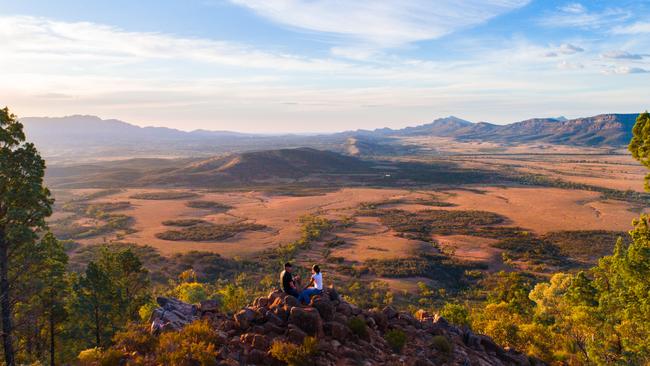

Rawnsley’s owners the Smith family have farmed in the Flinders since 1885 and are old tourism hands offering a selection of digs including luxury eco-villas. They’ve made a little camp in this isolated eyrie because it offers one of the outback’s most spectacular sunset views, and makes for a romantic, very Out of Africa night under the stars. We’re not glamping, this is a proper bush bivouac with swags sequestered among ghostly mallee trees, and a composting loo tucked away at a sensible distance. But Kym has sorted all the dreary details (camping for dummies).
After we’ve put down in dense bush and unloaded provisions (including ready-to-heat meals rustled up back at the station), the little yellow helicopter heads home. Scrambling over boulders and spiky grass trees we find camp on a dramatic rocky ridge, fire blazing, wood stacked, Clare Valley wine chilled. The view is astonishing, to the rugged Elder Range and towering ramparts of Wilpena Pound. All the way to the distant shore of the dry Lake Torrens.
As the light bleeds from the sky and the cold comes down, we drawer our canvas chairs closer to the blazing fire and tuck into lamb curry followed by chocolate pud.
The silent, time worn mountains, “the bones of the earth laid bare” artist Hans Heysen wrote, come alive at dusk, their rugged ramparts glowing fire against a velvet sky. After dark, stars dance like fireflies, the full moon is so near it appears to balance on a rock just over our left shoulder.
Cocooned in beanies, mittens and woolly socks we sleep like babes and at first light rustle up bacon and egg sarnies while watching a huge cloud waterfall spill over the pound’s walls.
By the time our third cuppa is downed, we spy Sam skimming across the plains to collect us. It’s been a wonderful night that could only have been improved if Robert Redford had dropped by.
NEED TO KNOW
Rawnsley’s fully inclusive, overnight ‘Heli-Camping Experience’ from $725 pp (minimum two). Season runs March-October. Luxury eco-villa accommodation from $470 per night.
■ rawnsleypark.com.au
Christine McCabe
-
Three Capes Walk, Tasmania

The stakes are as high as the towering sea cliffs on which you are perched. One misstep here — atop The Blade, at Cape Pillar on Tasmania’s Tasman Peninsula — and a messy end awaits.
Below your tiny rocky foothold lies a sheer drop, hundreds of metres to jagged cliffs and an angry sea.
If your acrophobia can be kept in check, however, this is one of the best places in Australia to linger.
For many, The Blade is the highlight of the Three Capes Track, a 46km hike featuring some of the world’s most spectacular coastal scenery.
Data provided to The Australian on the fifth anniversary of the opening of the groundbreaking walk suggests it has succeeded in its aim of converting a new cohort of Australians to bushwalking.
Since its inception on December 23, 2015, more than 50,000 people have marvelled at these cliffs and the track’s other varied landscapes — from rainforest to buttongrass plains and coastal heath — as well as its comfortable huts or luxury lodges.
“The popularity of the walk grew year on year prior to the COVID-19 pandemic,” Roger Jaensch, Tasmanian Parks Minister, tells The Australian.
Even in this pandemic-afflicted year — in which the state was in lockdown for several months, with its parks closed — about 7000 walkers will have enjoyed the track by the end of December.
It has reopened post-lockdown, although numbers are being limited to comply with coronavirus rules.

The Blade alone justifies the four-day, three-night walk. This elevated, thin crest of Jurassic dolerite, crowning the nation’s tallest sea cliffs, like the ridged back of a Spinosaurus, offers stunning,360-degree coastal views.
Humpback whales can be sightedfrolicking just offshore, while a glance upwards, or along the face of the surrounding cliffs, will often reveal a white-bellied sea eagle soaring serenely.
Directly opposite is the imposing bulk of Tasman Island and its lofty lighthouse, where until 1977 hardy keepers and their families endured the elements and loneliness to keep mariners safe from those fluted cliffs.
Even when fog and mist deprive the eyes of such glories, other senses come into play. Mysterious sounds drift upwards from the obscured depths; the playful barks of seal pups and lonely calls of seabirds, distorted by the unique acoustics.
Almost as marvellous as these natural wonders is the fact of being allowed, even encouraged, to be here at all.
In a world marred by risk-adverse bureaucrats and parasitical litigation lawyers, it is truly remarkable that the Three Capes features so few fences, guardrails or obtrusive warning signs.
The comprehensive, whimsical booklet provided to walkers contains no-nonsense advice, but the nanny state has been largely kept in check.
It’s a balanced, mature approach as refreshing as the Antarctic southerlies that batter this rugged coastline.
Some bushwalking purists dismiss the walk — with its comfortable accommodation, phone recharge points, guest rangers, wide tracks and feature seats — as “soft” and unchallenging.
However, those lured to Tasmania for the walk are often a different segment of the tourist market to those who brave the Overland or South Coast tracks, although many may be inspired to tackle these tougher treks.
And they bring sorely needed cash into the local economy. Jaensch points to research showing many Three Capes walkers stay an extra night on the Peninsula to enjoy other attractions, including the third cape not reached on the official walk: Cape Raoul.
Plans are now turning to construction of Tasmania’s “next iconic walk”, in the Tyndall Ranges on the rugged west coast. If it reaches the same heights — literal and metaphorical — as Three Capes, the state will have cemented its reputation as one of the walking capitals of the world.
NEED TO KNOW
Three Capes the independent way (self-catered, comfortable shared hut accommodation, no guide):
■ threecapestrack.com.au
The softer option — luxury lodges, gourmet food and wine, guided:
■ taswalkingco.com.au/three-capes-lodge-walk
Matthew Denholm
-
Rottnest Island, Western Australia
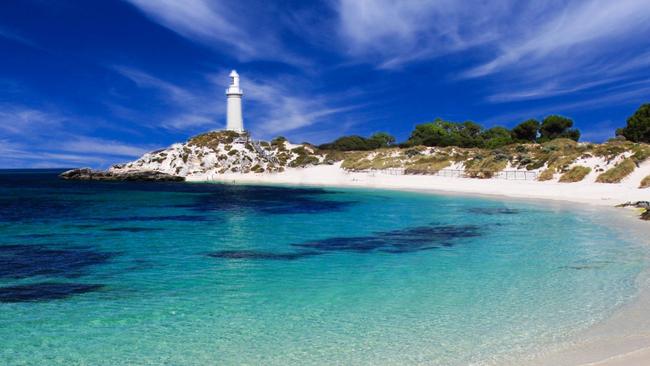
It’s mid-December, midweek, midmorning but that doesn’t mean there aren’t already a couple of hundred million dollars worth of boats moored in Thomson Bay — floating tributes to the local resources industry — and some of them rather large. Come Boxing Day, the waters of this crowded aquatic nook will boil with Perth cash. French press coffee and sparkling Italian water? Almost certainly.
Meantime a couple of blokes are sitting on the back of a modest speedy set up for serious fishing, stern in, outboard up, bow at anchor, drinking Swan Lager stubbies: breakfast of men — possibly women too — who probably aren’t going to work today.
There’s a strong southerly blowing, about 20 knots across the channel between mainland and island, but in here, beneath an impossibly expansive blue sky and glorious sun, sheltered from the blow and the rigours of normal life, everything is pretty much perfect, regardless of who you are.
Twenty four kilometres across the Indian Ocean but a radical mindset away, Rottnest looms in the Perth psyche like no other metropolitan playground in Australia. Its perimeter is stunningly beautiful, the island car-free, the onshore society egalitarian — mostly — and the perfect beaches, rocky coves and lobster-riddled waters incubators of the fondest memories for multiple generations.
Unless perhaps you happen to be descended from the original inhabitants of WA, who knew the place as Wadjemup, and who were imprisoned there and died en masse in the 19th century.
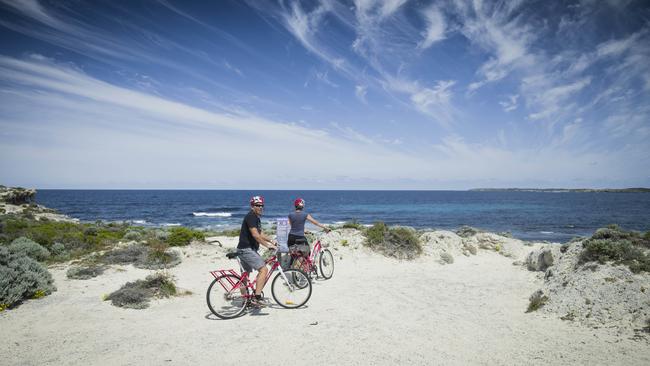
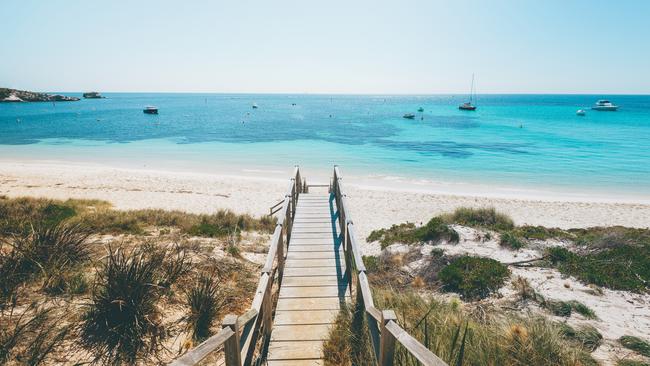
Today, Rottnest is a suburb of Perth but it has no class buy-in. The people here are from every strata of the sprawling low-rise coastal city in the distance.
As a first-timer, there’s much to process about the Rottnest myth, which is almost universal in WA because almost everyone loves the place: a lot of hype, a lot of emotional investment (my wife grew up in Perth, after all) but the natural beauty and happy vibe of a place run mostly by a statutory authority at modest profit for the benefit of the community is easy to absorb. The majority of Rotto’s accommodation is basic, amazingly positioned near the sea, and run on a first-in-best-dressed basis. Rottnest is, by its very charter, a leveller: being wealthy won’t get you cabin; only being strategic, and patient, will.
It ensures a refreshing mix of bicycle-borne folks of all ages, from schoolies to grey nomads, students to mums day-tripping with truant children. And yes, squillionaires on incredible boats (in Perth the only criterion for assessing a boat’s merit is, simply: “can you take it to Rotto?”)
My wife remembers the 1980s when a loudspeaker in the main settlement would alert school leavers to parental interference: “Kate Parry, your mother is on the phone”.
Rottnest has changed a little since.
The pub’s been done up; the basic but not character-free lodge accommodation house has become Karma; for the Kombi crowd who needs a better bed, there’s now a smart glamping business on Pinky Beach. And next to the pub, owned by the same family, is the new Samphire, a Seminyak-ish resort hotel complete with a Bali-based celebrity chef.
But the fundamentals remain.
The physical beauty. A safe environment that continues to provide adolescents with that first taste of independence. A carefree holiday vibe. Jack Johnson and pies from the Rottnest Bakery for breakfast; Tame Impala and beer on the foreshore at the Rottnest Hotel for dinner. School trips. Girls trips. Boys trips. Multi-generation family trips. Popped-collar polos and wife-beaters with Bintang logos. And everything between. What’s not to love?
NEED TO KNOW
■ Rottnest Express ferry return fare including island admission fee $76.50, from Fremantle
■ Karma Rottnest rooms from $290; Samphire rooms from $535
■ Rottnest Cruises Wild Seafood Experience $219 adult/$139 child
■ E-bike hire from Pedal & Flipper $61 plus $31 per additional day.
John Lethlean
-
Sydney, NSW

Cashmere? Anise? Definitely musk. Maybe even sandalwood?
Arabian Oud Oil — one of the most expensive raw scent ingredients in the world — is the focus of this treatment at CHI spaat the Shangri-La in Sydney.
For the 90-minute signature Oud Oil massage and facial, you can’t hear the roar of cars surging over that glorious steel coathanger, or the honk of a horn in Circular Quay only a stone’s throw away.
Welcome to Sydney — with benefits.
For an hour and a half, I took my mind to the souks of Dubai. Bustle! New Experiences! Luxury! Escape! Yes, please.
Brimming on a full year at home, most bucket list destinations are on hold indefinitely.
Fortunately, we have a global destination right here — and with its relatively Covid-free status you can bet it’s rocketedto the top of a million wish lists written in dozens of languages this year.
Sydney’s attractions are legion — and legendary.
But we’re talking to a home crowd here (as domestic borders snap open and shut with alarming unpredictability, NSW is opento all but coming home can be problematic with most states demanding a period of isolation post-visit).
So how about a staycation? Better still, a mini-break in a world-class luxury oasis in the historical heart of Sydney?
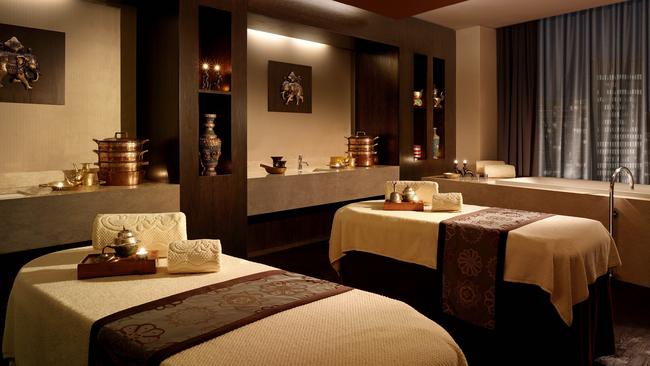
After a massage and facial treatment, perched at Blu Bar on 36 we drank cocktails with panoramic views of the sites that madeus famous — the nation’s most beautiful cliches — yachts on the water, the Harbour Bridge, the Opera House.
From the bar situated at the top level, look down to see the original international docking ports cloistered by old warehousesconverted into chic housing. Luna Park grins and ferries dart in and out of Circular Quay.
Located on the highest point of The Rocks precinct where a lighthouse once stood — you can see it all from here. The 523 guestroomsand 38 suites have subtle touches of Shangri-La’s signature oriental design, but it’s all about looking out. Every windowsill is the best seat in the house.
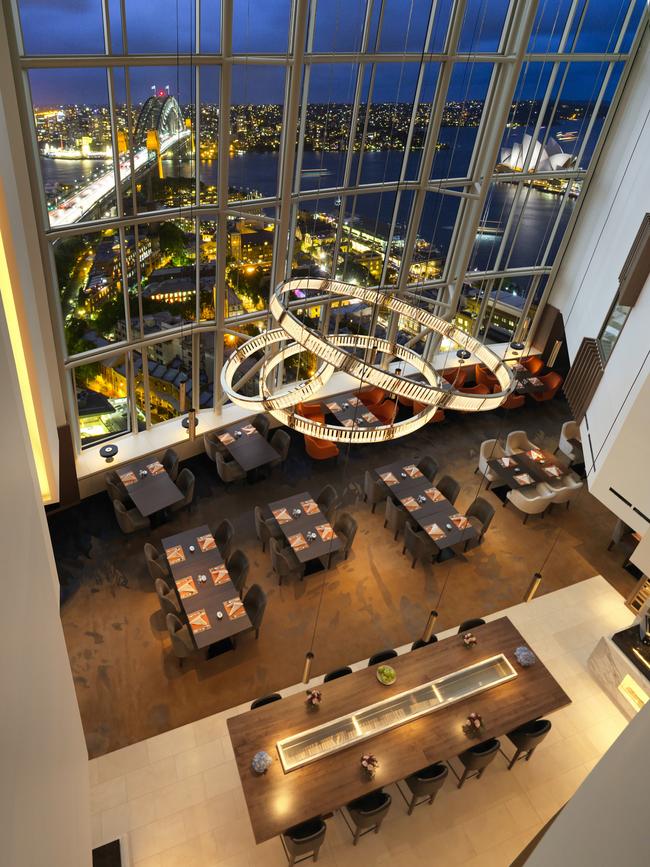
As you’d expect, the Shangri-La has all the hallmarks of a luxury escape: in-house spa, accommodating staff, valet parking,club lounge, swimming pool, gymnasium, bar, and top-notch dining. We had the pleasure of staying in the “07” series — thecollection of rooms with views of the Western Harbour and a bathtub overlooking Barangaroo. The “13” series centres the OperaHouse in your line of sight, and you can wake up to the sun rising over stretches of the eastern harbour.
But it’s on level 36, where you’ll find bar and Altitude restaurant, that the soaring glass windows give the illusion of floatingabove Sydney Harbour. Altitude seats less than 100 people, so every meal is intimate.
Opt for the sommelier wine pairing for $65 per person. Our sommelier, Adam, is outstanding. The apogee complements the richtruffle butter on the chargrilled focaccia, and the semillon cuts through the creamy ricotta in the zucchini flowers entrée.
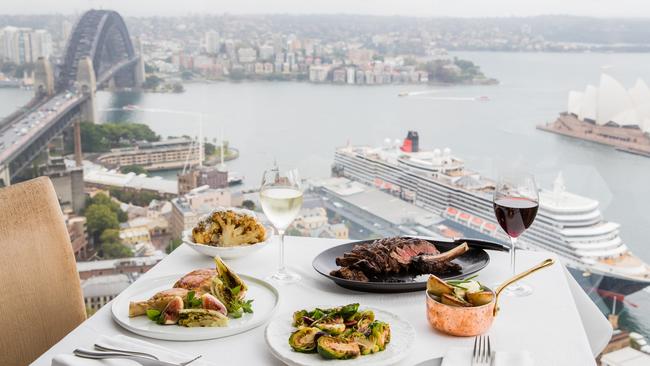
The meals are inspired by the produce, seafood, meat, and cultural cuisines we ought to be so proud of in Australia. Afterall pride in the places and people on this big island is what this list is all about.
Impressed by the slimline glassware (by Australian brand Plumm, I discover), I ask Adam where they are made. He answers myquestion and sums up something else we ought to be especially proud of in this country over the past year. “They come fromMelbourne. They make them more resilient there.”
NEED TO KNOW
Summer package special for an average of $340 per night includes overnight accommodation, valet parking, early check-in and late check-out, and a $100 food and beverage credit. Until February 28.
■ shangri-la.com
Elyse Popplewell
